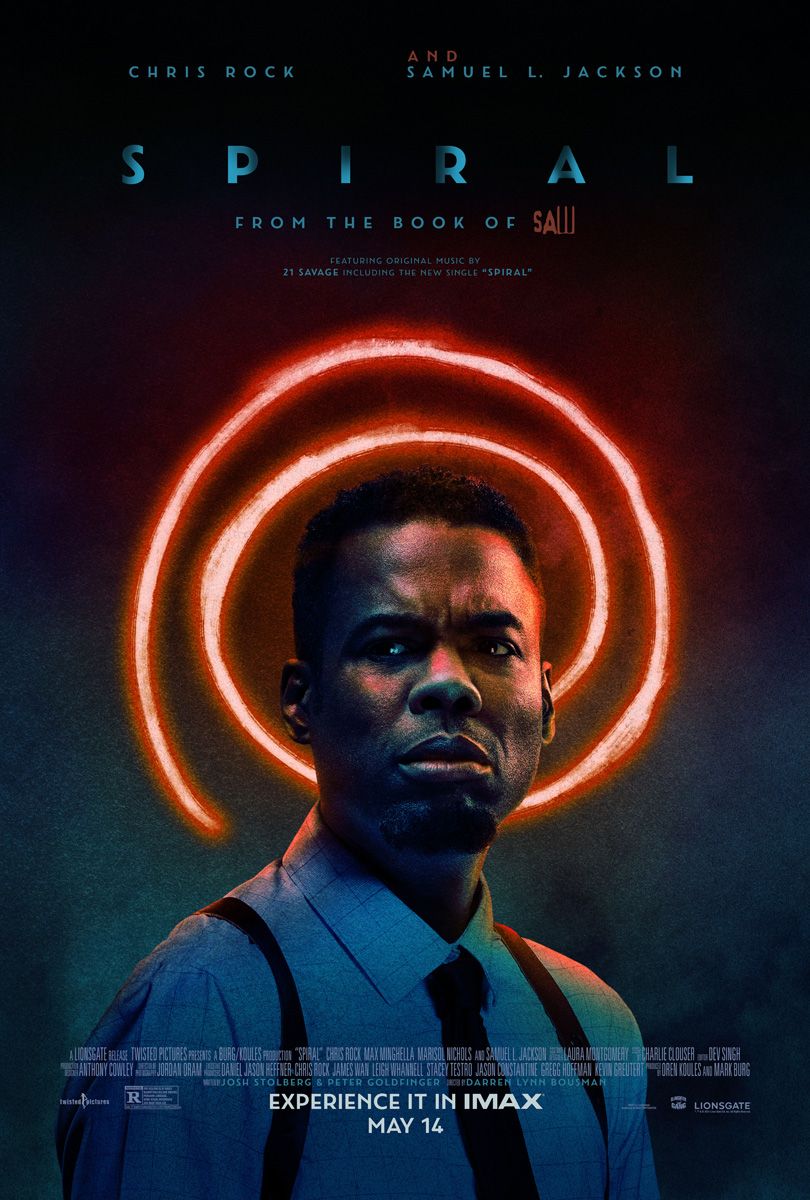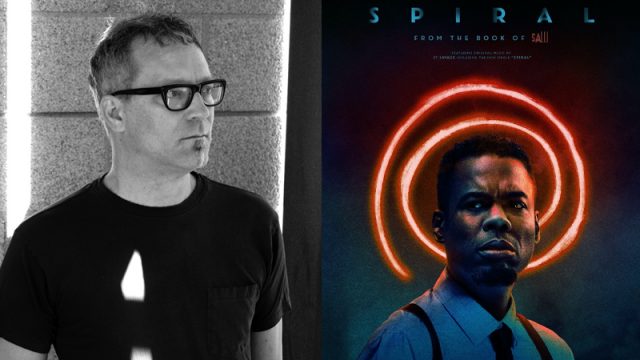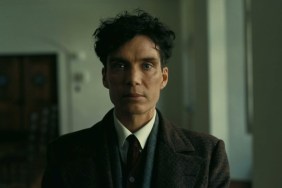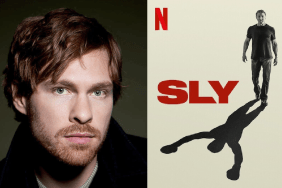ComingSoon.net’s Jeff Ames caught up with Charlie Clouser to discuss his latest score for Spiral, which is currently playing in theaters. The composer has been a staple of the Saw franchise since the beginning and found himself in the unique position of reworking his score to fit the reboot.
Along with the Saw series, Clouser has also scored music for TV shows such as Las Vegas, Numb3rs, and Wayward Pines; and theatrical films such Deep Water, Dead Silence, Death Sentence, and Resident Evil: Extinction. Previously, he worked alongside Trent Reznor on Nine Inch Nails.
Clouser’s original motion picture score for Spiral releases May 21. Pre-order the soundtrack here!
Jeff Ames: You worked alongside Trent Reznor on Nine Inch Nails — did you always see yourself as a film composer?
Charlie Clouser: Even before I got involved with Nine Inch Nails, I had spent a few years working on television scores with an Australian composer named Cameron Allan, mostly doing synth sound design and rhythm programming for the original series version of The Equalizer. That was a great experience since I got to learn the workflow, the terminology, what worked, and what didn’t. So it was always my plan to return to scoring eventually, although things went a little better than expected for me in the record industry, so my return was delayed by a decade or so. But I really enjoy both sides of my career so far and I wouldn’t change a thing.
Ames: You’ve been with the Saw franchise since the very beginning — what initially drew you to this world? And what continues to pull you back?
Clouser: The sounds and melodies that I’ve always been drawn to are kind of a natural match for movies with a dark and intense feel, so suspense and horror films are right up my alley. Dissonant, aggressive, scary textures were elements of the records I was involved in, and fit right in with the Saw franchise. I definitely feel lucky that my scores have enough of an oddball feel that they’ve sort of become a bit of a character in the Saw saga, and I’ll keep scoring them for as long as they keep making them. We’re nine films deep into the franchise with no end in sight, so I guess early retirement isn’t an option for me at this point.
Ames: What was your experience like on the original Saw working alongside then-newcomer James Wan?
Clouser: James Wan is a hugely impressive talent, and this was evident right from the start of his career, so I’m glad I was able to be there at the beginning. His knowledge of and love for the genre runs deep, and he’s got a deep understanding of every nook and cranny of horror movies, from golden-era Hollywood films to seventies Italian slasher pics, so it was easy to find a path towards the kind of music he wanted in his films. His ability to take a zoomed-out view of the arc of the score, and to develop a musical plan of attack that would lead us up to the big twist ending in an exciting manner. His level of expertise would be impressive in any filmmaker, let alone a young gun like he was back in 2003 when we started this adventure.
RELATED: Spiral: From the Book of Saw Opening Scene Previews Gruesome Trap
Ames: How did your music for the Saw franchise evolve over the course of the series? And how did you evolve as a composer?
Clouser: For the first film I took a much more simplistic and minimal approach to the score than I did in later films, and this was mainly in response to what was on the screen. The first film didn’t have the big, elaborate trap scenes that became a recurring element in the sequels, so as those scenes became a major part of the saga I responded by constructing bigger and more elaborate cues, with lots of intricate tempo mapping to match the rhythm of the picture edits. Those “trap cues” are usually one-off chunks of musical sculpture, as opposed to thematic melodic material that can get re-interpreted throughout the series, so they’re always difficult but fun to create, but very different from writing character-based themes. Alongside those sculptural pieces, there has been a through-line of melodic themes that are tied to characters in a more conventional scoring mode, and it’s always fun to find those links across the sequels and drop in chunks of melodies when appropriate. I do use certain intervals, modes, and of course sounds that I keep only for the Saw films, in the hopes that it will give a consistent and unique feel to these scores, so it’s almost like I have a separate, locked mental drawer in which I keep my Saw toolkit.
Ames: Spiral serves as a quasi reboot of the series. In what ways does your music reflect this new change in direction?
Clouser: Unlike most of the earlier films in the franchise, a lot of the story and action in Spiral takes place outdoors, and some scenes are even in broad daylight, which happens pretty rarely in a Saw movie. So that led me to use brighter, sharper, and more percussive sounds in a lot of scenes, more tension-building percussion, and less of the dark and murky textures that formed the backbone of so many of the other scores. There’s still plenty of weird ambiances and shocking sounds in there for sure, but with that added layer of elements that are coming from an action-movie angle as opposed to a horror-movie place. That was a refreshing change for me, and as soon as I saw the look of this film I knew that my job just got easier, since I’d been itching to use more of those action-movie elements to widen the scope of these scores.
Ames: Were there new techniques or instruments you implemented for this new score?
Clouser: I definitely was able to incorporate a palette of new sounds this time around, including some of those action-movie percussion and orchestral elements that feel like an outdoor setting to me, and wouldn’t feel appropriate for scenes set in some damp, dark dungeon-like you’d find in the earlier films. But even when the action moves into darker, more familiar Saw territory, I was able to find some new bowed-metal instruments that I hadn’t used before. One standout was an instrument called “Tio” which was built by musician, sculptor, and metal fabricator Chas Smith, whose other instruments like “Que Lastas” formed such an important part of previous scores in the franchise. The “Tio” instrument is something like a double-sided waterphone, with a sixteen-inch carbon steel saw blade as the resonating body, so it was a natural fit for a Saw movie! The whole device is mounted on a low-friction bearing so that it can rotate freely and produces sounds ranging from microtonal whistles to terrifying screeches, so it was a perfect fit.
Ames: What was your working relationship like with director Darryn Lynn Bousman? What fresh ideas did he bring to the franchise? What was his approach to the music?
Clouser: Darren is such an enthusiastic collaborator, and James Wan has deep knowledge of the genre. His visual style in some of the previous Saw movies we’ve done together is at times almost gothic, and in those films, I often responded to that with grandiose, epic sounds and melodies. This time around his visual style is more gritty and sweaty, so that led me to reign in the epic stuff and kind of put nipple clamps on the sound, hopefully adding a feel of pressure, stress, and tension to the score. It’s never been a struggle to find our path, and he’s always got good instincts about how to find ways to link characters and places through the score, and when the director can point you at the target and press the “fire” button like Darren can, it makes the process so much easier and the results that much better.
RELATED: First 15 Minutes of Zack Snyder’s Army of the Dead Revealed!
Ames: What is your process when scoring a horror film such as Saw or Spiral? How do you begin searching for the musical identity?
Clouser: After we’ve spotted the film and nailed down what music goes where for the first week or two I’m just watching the film in loop mode while just recording and processing new sounds that I can use as the toolkit for the score. In this phase I’m not actually scoring to picture, I’m just recording new raw material which I may use as individual samples played from a keyboard, or chunks of rhythmic material which I can manipulate and fit into the score as it develops, or just making long chunks of droning textures that I’ll deploy as audio beds behind cues. Once I’ve got that drawer full enough, I spend an inordinate amount of time making precise and often elaborate tempo and meter maps for each cue so that everything fits with the rhythm of the story, the action, and the picture edits. Even for non-rhythmic cues that are mostly “floaty” sounds and don’t feel like they have an inherent tempo, I still want to have the underlying grid act as something like a wire-frame image of the music I’ll write on top of it. That lets me get closer to the feeling of having the action dancing in sync with the music, even in the more ambient sections. It’s sort of like drawing the outlines in a coloring book; once the lines are clearly drawn it’s much easier to color in the big spaces.
Ames: Is there a particular moment in the score or track you’re excited for audiences/fans to hear?
Clouser: There’s a couple of the action-movie style cues that I had a lot of fun doing, and are pretty different to most of the previous scores, and I hope the audience will like them as much as I did. One scene involving the police rolling up on a suspicious pickup truck, another outside a drug den, and another that takes place in the basement of police headquarters all had great energy and I approached them from a different angle than I usually do, so I hope those are moments where the audience feels some extra energy from the score.
Ames: Who were the primary influences that formed the basis of your musical identity?
My earliest influences were from the art-rock side, bands like Roxy Music, Talking Heads, Pink Floyd, and of course the pair of landmark collaborations between David Byrne and Brian Eno that gave us the albums “My Life In The Bush Of Ghosts” and “The Catherine Wheel”. None of those artists are specifically synthesizer-oriented, and although there’s lots of synth work on them they always felt more like heavily processed feats of studio wizardry, sound-collages that were so dense and inscrutable that you couldn’t figure out what instruments or devices were used to create them. As time went by and I discovered heavier bands like Killing Joke and Ministry, those industrial and metal elements led me to hybrid, almost cyber-metal approaches that blended programming, processing, and conventional metal recording techniques in an attempt to create unholy super-organisms, thousand-foot-tall steampunk kill-bots hell-bent on total destruction. Stick all that stuff in a wood chipper and next thing you know you’ve got a Saw score.
Ames: Do you have any future projects you can share with us?
Clouser: Nothing that I can call out by name, but over the summer I’ll score my first documentary feature, about a unique moment in recent history where a long history of political unrest was partially defused by an artistic movement, a really interesting confluence of historical events that I never even knew existed until I saw the film. So I’m looking forward to that for sure, and I predict that the Saw saga is far from over, so I’m keeping my knives sharpened for whatever comes next in that world as well.
Ames: Any parting words on the Spiral soundtrack?
Clouser: There’s a lot of cool artists contributing songs to the soundtrack alongside my score, including tracks by the artist 21savage that use samples from the “Hello Zepp” theme that appears in all of the films. There’s a zillion unauthorized remixes and mixtape tracks on YouTube that sample that piece of music, so it was great to be involved in an authorized one for a change! 21savage and his crew flipped the samples from the score that I gave them into absolute bangers that I hope will light some fuses outside the theater as well as inside, and he’s got an EP coming out the same day as the movie hits theaters, with music videos that use clips from the film as well, so that was a really cool side mission this time around, something we haven’t done before in the franchise, and a ton of fun.
Spiral: From the Book of Saw
-
Spiral: From the Book of Saw

-
Fin09_spiral_612_1sheet_payoff_imax_trim 3 1











